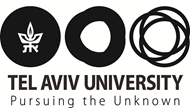Digital Humanities at the Sourasky Central Library
The field of Digital Humanities has evolved, and in some cases, even redefining, traditional research of various subjects, resources, and methodologies using scientific techniques and tools. This research field combines traditional humanities and social sciences queries and research methods with digital tools
 Our Mission
Our Mission
At the Sourasky Central Library we offer support and resources for Tel Aviv University researchers and students who wish to use computer-based technologies to answer research questions related to the humanities and arts.
 Guiding Rules
Guiding Rules
-
Providing guidance, tutorials, and seminars to develop DH skills for conducting research and teaching.
-
Preferring Open Source software tools, making research products easily accessible, and preserving the data after the research has been completed (or financial resources have run out).
-
Providing support and advice in writing research proposals that include the use of digital tools, from the stage of writing the proposal to the implementation stage.
-
Focusing on four major tools: Converting images to text (OCR), Spatial analysis (GIS), Distant Reading (DR), Content Management Systems (CMS).
 Our Services for the Tel-Aviv University Community
Our Services for the Tel-Aviv University Community
-
OCR Services are offered via a designated online form (The service is only provided to the Tel-Aviv University students and staff members) and will be fulfilled within our work schedule.
-
Practical workshops are given on useful tools covering various aspects of the DH field. We publish (occasionally) workshops, that are open to the Tel-Aviv University Community. In addition, a customized workshop can be request for a specific class.
-
Personal guidance for the Tel-Aviv University Community – "One on one" 1-hour session. When needed, a second 1-hour guidance session can be requested (both sessions are free of charge). If an additional (3rd, 4th, etc.) session is needed – each additional one would cost Academic staff members 300 NIS.

 What is Geographic Information System (GIS)?
What is Geographic Information System (GIS)?
A Geographic Information System (GIS) is a computerized tool for managing and analyzing geography-related data. It can generate maps for various purposes. Originally developed in the 1970s, GIS was primarily used by urban planners and engineers for tasks such as mapping land use, analyzing transportation systems, and managing structures. However, in recent decades, GIS technology has advanced significantly and is now accessible to a wider range of users.
 Geographic Information System and DH
Geographic Information System and DH
Geographic Information Systems (GIS) currently allow humanities researchers to quickly and efficiently analyze their research questions in a spatial context. One of the key features of GIS is the ability to work with layers of data, which enables researchers to combine various sources in their research. For example, researchers can use GIS to examine the correlation between intercity migration and socioeconomic characteristics, or the relationship between an epidemic and sewage transport routes and water resources, by combining historical data from different sources. Additionally, GIS allows researchers to use digital images such as aerial photographs, drafts, and scanned historical maps to conduct spatial analysis.
 Geographic Information systems
Geographic Information systems
QGIS: A powerful, open-source Geographic Information System (GIS) that is freely available to use. Our DH Lab has installed the software on multiple workstations, providing advanced GIS capabilities that allow users to create basic maps and enhance them with data from various sources. Moreover, the software comes with a rich library of plugins that provide access to additional functionalities. To help users get started, the Reference and Guidance Desk offers regular workshops on QGIS for beginners. With QGIS, users can create professional-grade maps and unlock new insights from their data.
For more information: Main Entrance Hall | cenlib@tauex.tau.ac.il | 03-6404823

